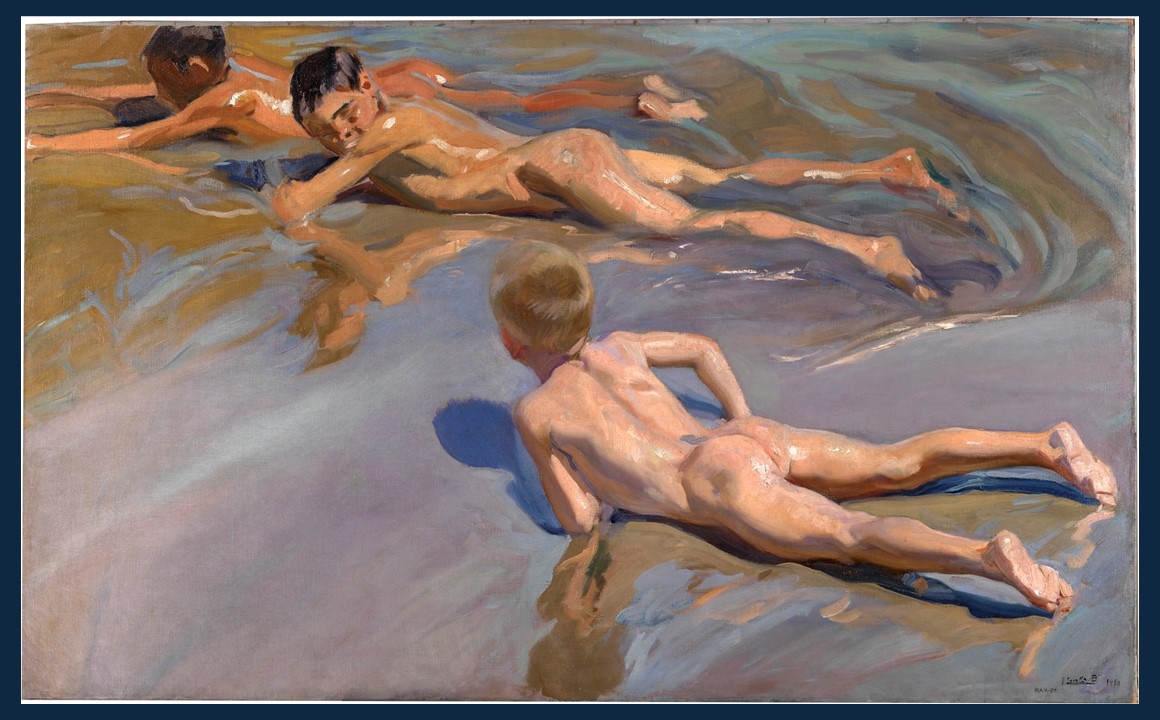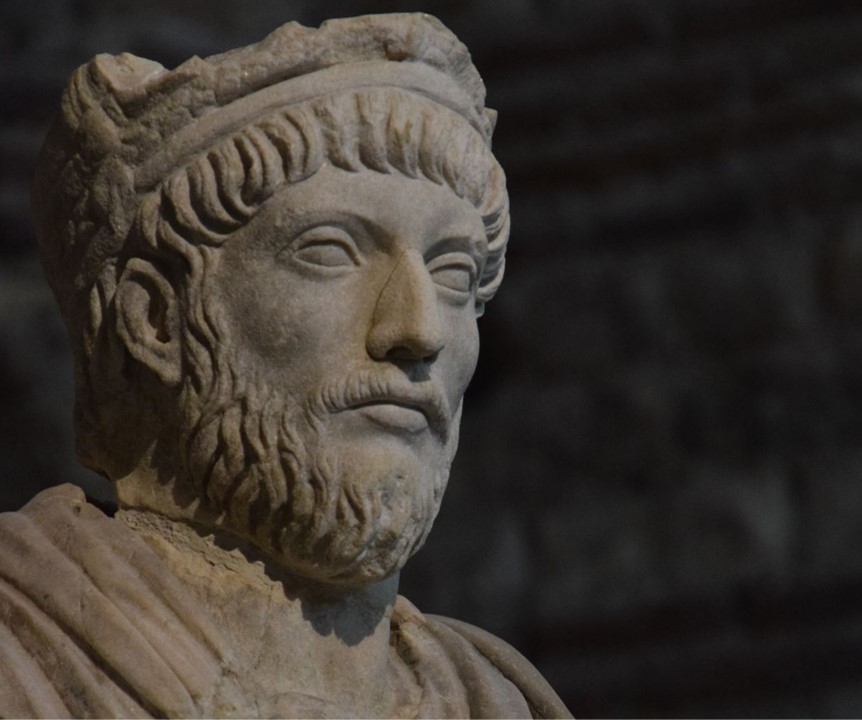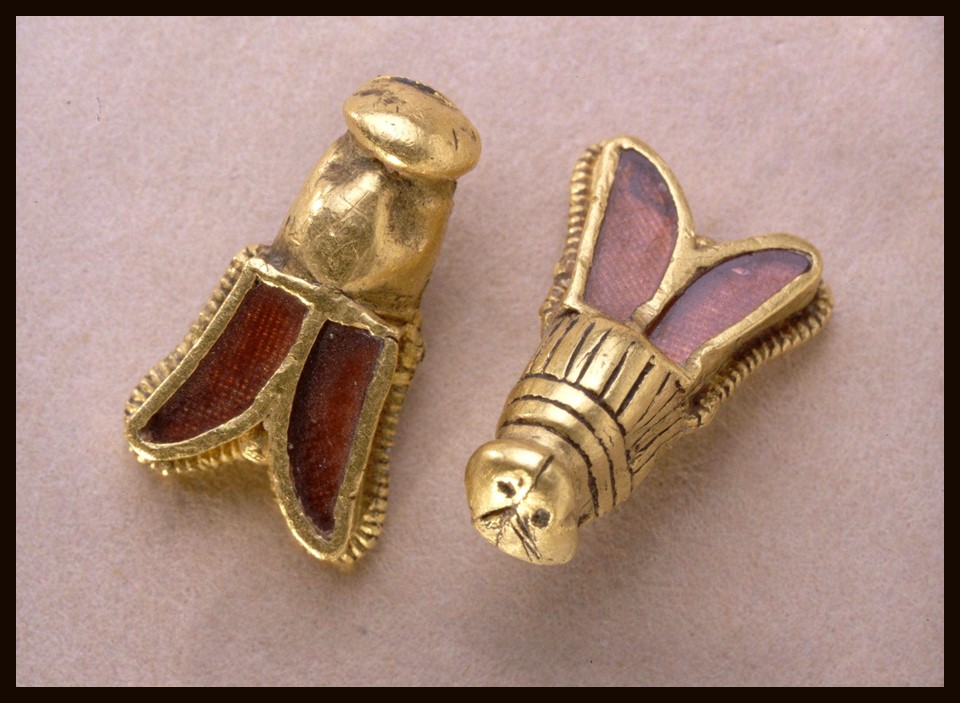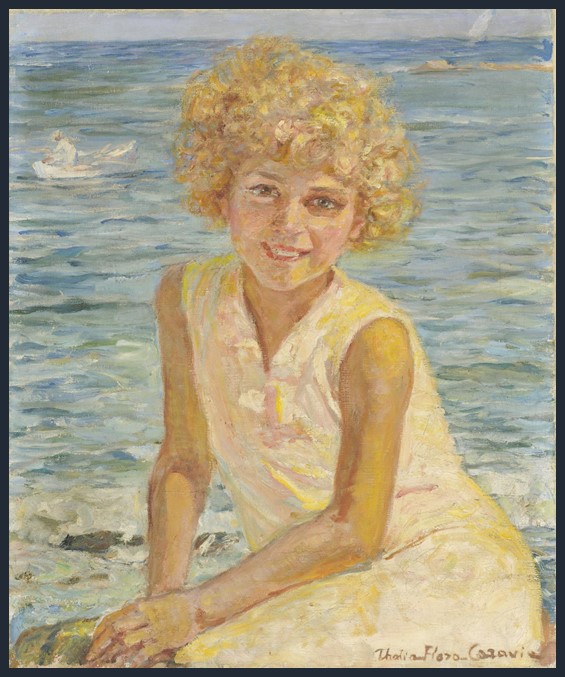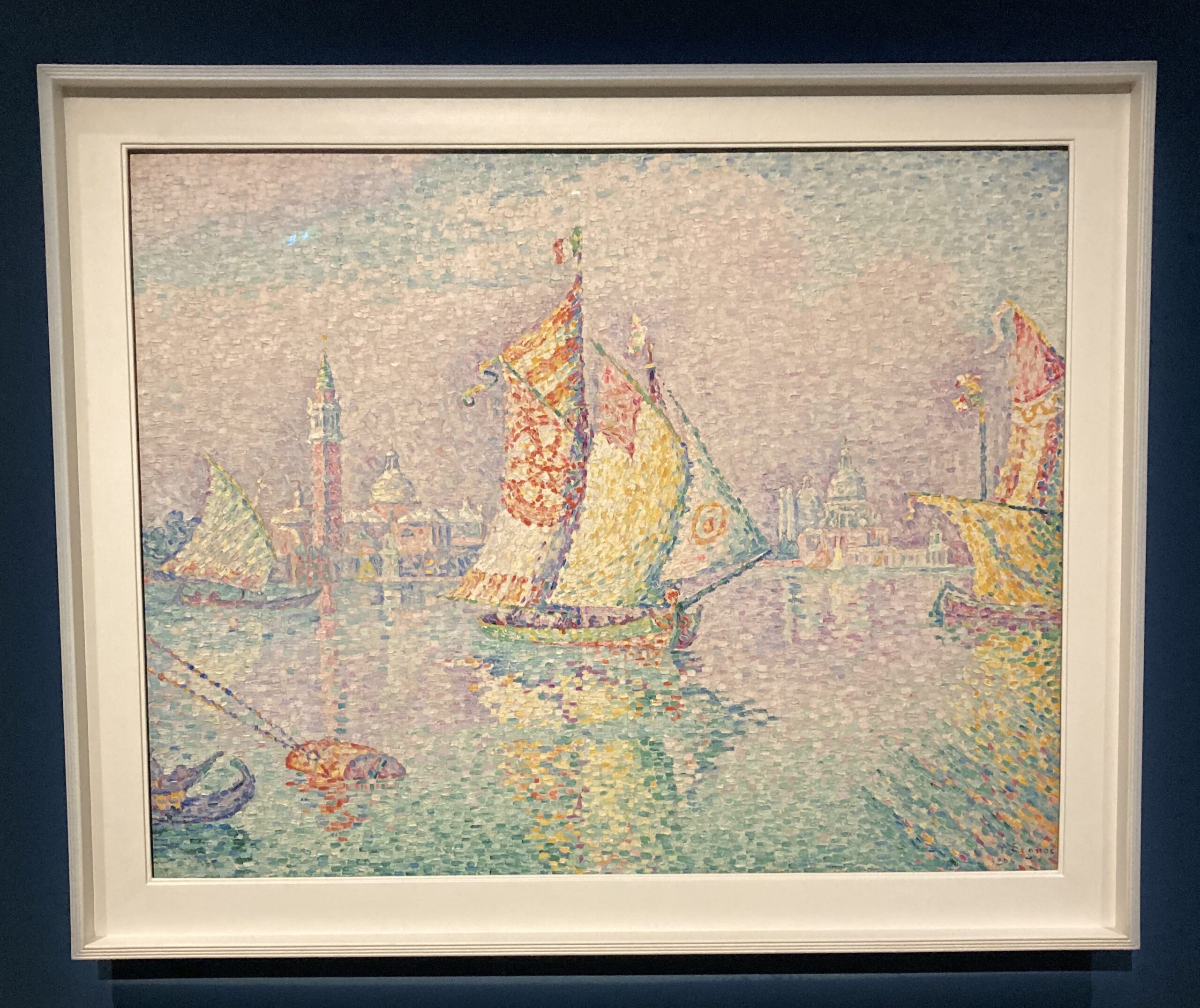
Hay Making, 1877, Oil on Canvas, 180×195 cm, Musée d’Orsay, Paris, France
http://www.musee-orsay.fr/fr/agenda/expositions/jules-bastien-lepage-1848-1884
I come! I come! and the waving field / its wealth of golden grain shall yield. / In the hush and heat of glowing noon, / The insects’ hum is the only tune; / For the merriest birds forget to sing, / And sit in the shade with drooping wing. The painting Hay Making by Jules Bastien-Lepage presents the hush and heat of glowing noon with a tired but relaxing couple sitting in the shade, exhausted, yet content. There is such dignity in Bastien-Lepage’s presentation of this unassuming composition, I would like to explore it more… https://discoverpoetry.com/poems/august-poems/
Bastien-Lepage produced a collection of deeply personal artworks, firmly establishing his position within the Naturalism movement’s historical timeline. His oeuvre is focused on three main art areas: depicting realistic genre themes, creating rural landscapes, and fashioning truthful portraits. The sincerity portrayed in his paintings gained him a loyal following not only in France but also across Europe. Beauty, I am convinced, Jules Bastien-Lepage once said, is the exact truth: neither to the right nor to the left, but in the middle! https://www.theartstory.org/artist/bastien-lepage-jules/ and https://www.teachercurator.com/art/october-by-jules-bastien-lepage/
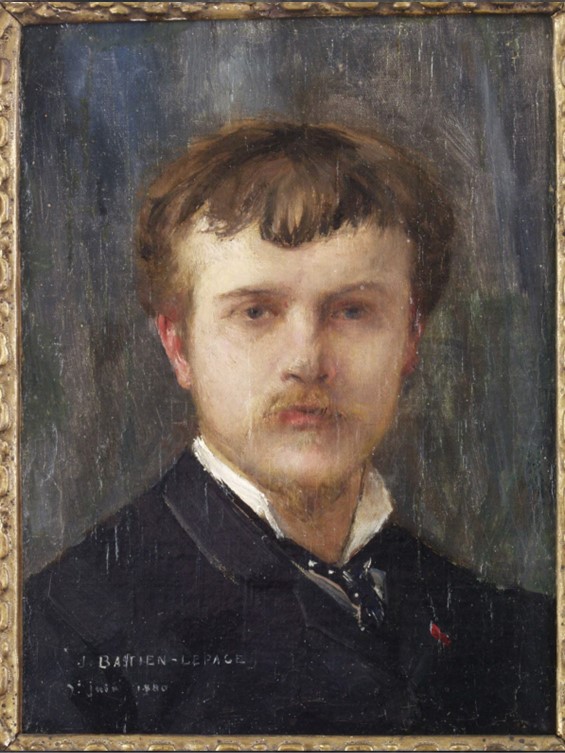
Self-portrait at 32 years old, 1880, oil on canvas, 31×25 cm, Musée Bastien-Lepage, Clos Raymond, France
https://www.vosgesmatin.fr/art-et-culture/2019/05/12/autoportrait
The artist was born on the 1st of November 1848, in Damvillers, France, and showed an early talent for art. He studied at the École des Beaux-Arts in Paris, where he was influenced by the works of the Barbizon School painters, particularly Jean-Baptiste Corot and Gustave Courbet. Bastien-Lepage’s style combined elements of Realism, focusing on capturing the effects of light and atmosphere. His approach to painting often involved working directly from nature, capturing the effects of light and the nuances of everyday life. His subjects included landscapes, portraits, and genre scenes, all characterized by meticulous attention to detail and a sense of honesty and seriousness. https://www.teachercurator.com/art/october-by-jules-bastien-lepage/
Unfortunately, Jules Bastien-Lepage’s career was cut short when he died at the age of thirty-six. His work, however, had a significant impact on the development of Naturalism and influenced many artists who followed. Today, regarded as an important figure in the history of 19th-century French art, Bastien-Lepage is respected for the sincerity, and the dignity with which he depicted the Meuse region in which he grew up, and the workers and peasants who his brush rendered! https://www.theartstory.org/artist/bastien-lepage-jules/ and https://www.teachercurator.com/art/october-by-jules-bastien-lepage/
For the Paris Salon Bastien-Lepage created and exhibited a pair of Harvest Scenes that marked a new direction in his career as a painter. The earlier of the two works, The Haymakers, (today, in the Musée d’Orsay), exhibited at the Salon in 1878, shows two weary haymakers resting in the summer heat. The second painting, exhibited at the Paris Salon of 1879, and titled October or The Potato Harvest, (today, in the National Gallery of Victoria, Melbourne, Australia) is an account of the bleak autumnal potato harvest, set in a bare, featureless landscape. Both paintings, powerfully rendered, and careful studies of life in the fields, had a considerable influence on the art scene of the time. Both paintings created a new trend in art, and, without intention on Bastien-Lepage’s part, the painter of the Meusian peasants became the head of an Art School. https://www.ngv.vic.gov.au/explore/collection/work/3768/ and https://www.teachercurator.com/art/october-by-jules-bastien-lepage/

Hay Making (detail), 1877, Oil on Canvas, 180×195 cm, Musée d’Orsay, Paris, France
http://www.musee-orsay.fr/fr/agenda/expositions/jules-bastien-lepage-1848-1884
Jules Bastien-Lepage’s painting Hay Making, also known as Les Foins, is a significant work in the Realist tradition that captures a poignant scene of rural life. The painting features two peasant workers resting during the hay harvest: a young woman seated in the foreground, depicted in fatigue and contemplation, and a young man lying behind her, seemingly asleep. Set in a sunlit field with the expansive countryside in the background, the scene is bathed in soft, diffused light, highlighting the textures of the hay and the workers’ clothing. The earthy tones of greens, browns, and yellows evoke the warmth of a summer day, while the delicate and precise brushwork adds to the lifelike quality of the figures and their surroundings.
Hay Making conveys a sense of exhaustion and tranquillity, capturing a moment of respite in a long day of hard work. The painting serves as a subtle social commentary on the lives of rural workers, depicting them with dignity and realism, and highlighting their often-overlooked hardships and humanity. Celebrated for its technical excellence and emotional depth, the painting influenced the development of Naturalism in art and left a lasting impact on contemporaries and later artists who sought to portray ordinary life with sincerity and precision. Bastien-Lepage’s work remains a testament to the values and aesthetics of the late 19th-century Realist movement, honouring the everyday labour of peasants with empathy and respect.
For a PowerPoint on the artistic oeuvre of Jules Bastien-Lepage, please… Check HERE!
Interesting to read is the book Jules Bastien-Lepage and His Art. A Memoir. Written by the artist’s friend Andre Theuriet, the entire book is free and online at… https://archive.org/details/julesbastienlepa00theu/page/50/mode/2up and https://www.musee-orsay.fr/fr/agenda/expositions/jules-bastien-lepage-1848-1884 and https://www.musee-orsay.fr/fr/oeuvres/les-foins-9174
